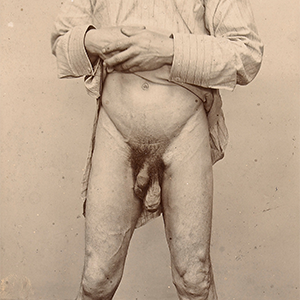Varicoceles in War
Samuel Donnenfeld, MD
At the time of the American Civil War, varicoceles were considered a significant medical problem capable of causing lifelong disability. When a soldier was found to have a varicocele, he was deemed to be in urgent need of medical care and, in some cases, he was relieved of duty. Varicoceles also comprised a significant monetary expense for the nation's first military pension program.
If entry examination identified a potential soldier to have an asymptomatic varicocele or one in which the dilatation was more substantial than either testicle, he was denied entry into either army due to several pervasive beliefs: severity of the disease, marching led to varicoceles, and afflicted soldiers were unable to perform their duties. Varicoceles resulted in the highest rate of discharge of any urological condition during the Civil War. Other urological disorders including testis tumors, kidney stones, and urethral strictures were considered stable chronic diseases without the need for medical attention and rarely resulted in discharge.

Varicocele
Wikipedia

Varicocele Example
Wikipedia
Following the conflict, varicoceles occupied the twenty-second most common reason for lifetime military pension payouts - more common than asthma, spinal cord disorders, and all bladder conditions. Monthly pay for privates was over 36% and was equitable with other conditions today deemed much more serious including large hernias, loss of an eye, or loss of a thumb.
Today we are aware of how common varicoceles are; most estimates state that approximately 15% of adult men have some degree of varicocele. We are also more aware that the cause of varicoceles is related in part to the workings of the valves in the pampiniform plexus, either by not working appropriately or being missing altogether. Also, due to the venous drainage of the scrotum on the right leading directly into the inferior vena cava and the left into the renal vein, more pressure is necessary on the left side to keep blood flowing appropriately and preventing pooling of blood in the scrotum.
Even today, according to the Department of Defense, a varicocele is disqualifying from joining any American military branch unless it is on the left side only, asymptomatic, smaller than the associated testicle, reducible, and without associated testicular atrophy. While fixation of a varicocele (called a varicocelectomy) was rarely performed in the nineteenth century due to its morbid outcomes, urologists all over the world today perform the operation with very high rates of success. Urologists perform this surgery mostly as an outpatient procedure through microsurgery or as an open surgical procedure.



